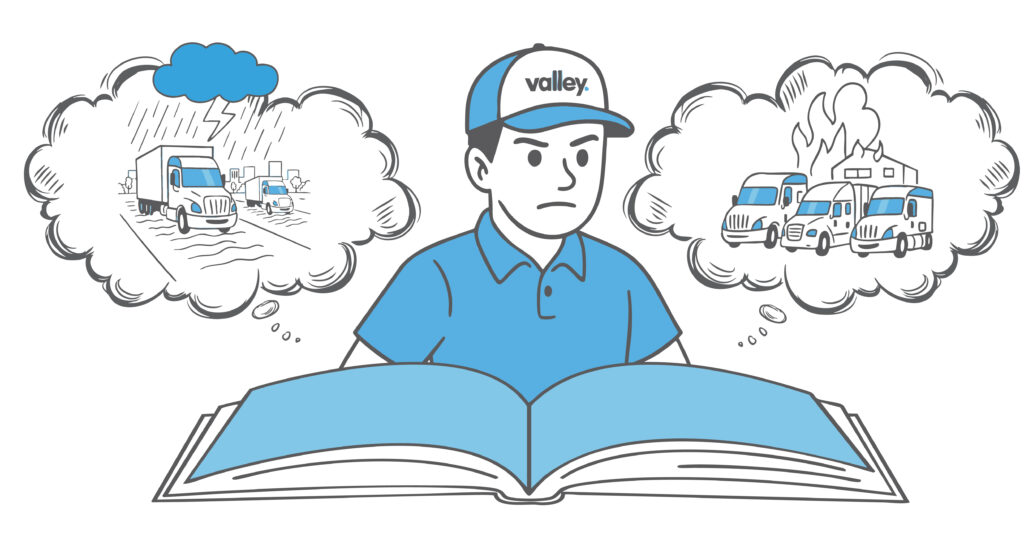The Crisis Playbook in Trucking

When a crisis hits your fleet, speed and clarity decide whether you recover or crumble. One breakdown, one cyberattack, or one storm can ripple through every part of your business. Fleets that survive these moments have one thing in common, a plan. The crisis playbook.
Quick Answer
A crisis playbook helps companies respond fast, protect people, and restore operations. It gives clear steps, preassigned roles, and communication templates so everyone knows what to do when things go wrong.
Why It Matters
Emergencies never wait for the right time. Weather events, road closures, data breaches, and mechanical failures happen with no warning. Without a plan, panic spreads faster than information. According to the Logistics Bureau, many logistics companies still handle crises reactively instead of proactively, which leads to delays, missed communication, and lost trust.
A good playbook gives you calm amid chaos. It outlines who acts, who decides, and who communicates. When time is short, preparation saves more than profit, it saves reputation.
What a Crisis Playbook Should Include
A complete crisis playbook covers four stages: Prepare, Respond, Recover, and Review.
1. Prepare
Preparation turns panic into process.
- Assign a Crisis Management Team with clear roles.
- List likely scenarios such as severe weather, system failures, or serious collisions.
- Build contact lists and emergency communication channels.
- Create message templates for customers, staff, and partners.
- Run drills to test readiness.
The Federal Emergency Management Agency provides practical resources that companies can adapt to business settings. Even small carriers can use FEMA’s structure for response roles and information flow.
2. Respond
When disaster strikes, every minute counts.
- Assess the scope and safety risks immediately.
- Communicate quickly and clearly to all parties.
- Protect people and secure high-priority assets.
- Use simple updates instead of waiting for full details.
- Keep one leader in charge of decisions.
Speed matters, but accuracy matters more. Be visible, stay factual, and avoid speculation.
3. Recover
After the first wave passes, focus on restoring normal operations.
- Prioritize critical routes and contracts.
- Reopen systems carefully to avoid secondary failures.
- Provide constant status updates to customers and teams.
- Document every expense and decision for later review.
Recovery also means managing people. Recognize stress and fatigue. A well-handled recovery earns loyalty from both drivers and clients.
4. Review
When the crisis ends, the real work begins.
- Hold a post-incident review with all stakeholders.
- Record what worked and what failed.
- Update the playbook and contact lists.
- Schedule another drill within three months to apply lessons learned.
The Occupational Safety and Health Administration also encourages post-incident evaluations. These reviews turn each crisis into training for the next one.
Real-World Example
In early 2025, a coastal carrier faced severe flooding that halted access to its main yard. Because its team already had a flood plan, they switched operations to a secondary site within hours. Drivers received alternate route instructions immediately, and customers were updated before news of the flooding hit social media. The company avoided service penalties and strengthened trust with clients.
Common Mistakes to Avoid
- Waiting for disaster before creating a plan
- Ignoring training or skipping drills
- Assuming one plan fits every crisis
- Failing to communicate regularly during an event
- Neglecting post-crisis reviews
FAQs
What qualifies as a crisis?
- Any event that disrupts normal operations, endangers people, or risks large financial or reputational damage.
How often should a crisis plan be reviewed?
- At least once a year and after every major event.
Who should lead the response?
- A small, empowered team with authority to make fast decisions and approve communications.
Can small fleets create a playbook too?
- Yes. Even a short checklist with roles, contacts, and basic response steps can prevent confusion and speed recovery.
How should you communicate during a crisis?
- Use short, factual updates at regular intervals. Never go silent. Silence causes speculation and panic.
Final Thoughts
A crisis will happen. What matters is how you respond. A clear playbook gives your team structure when everything feels uncertain. It shows customers, partners, and drivers that you are in control even when conditions are not.
